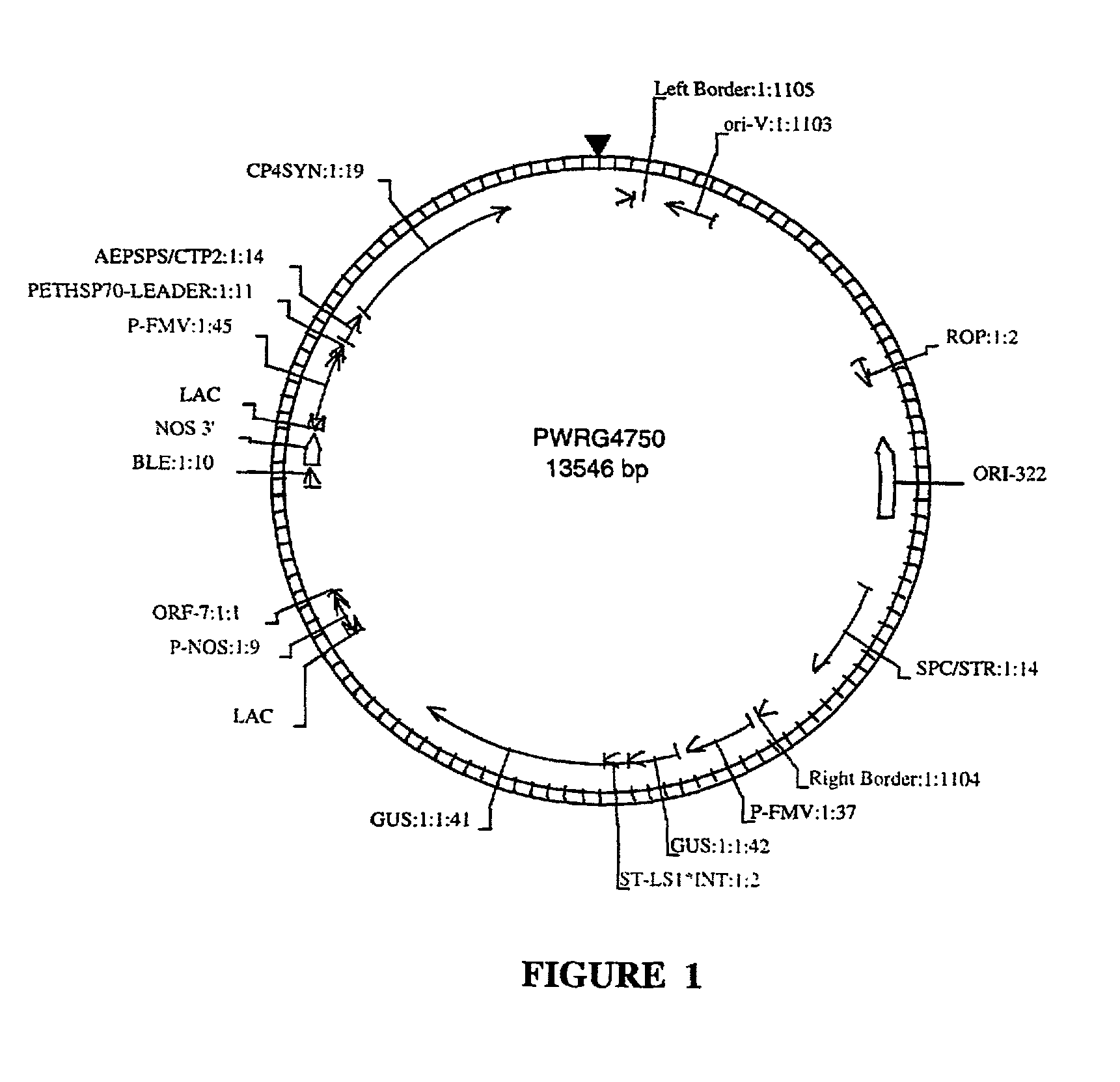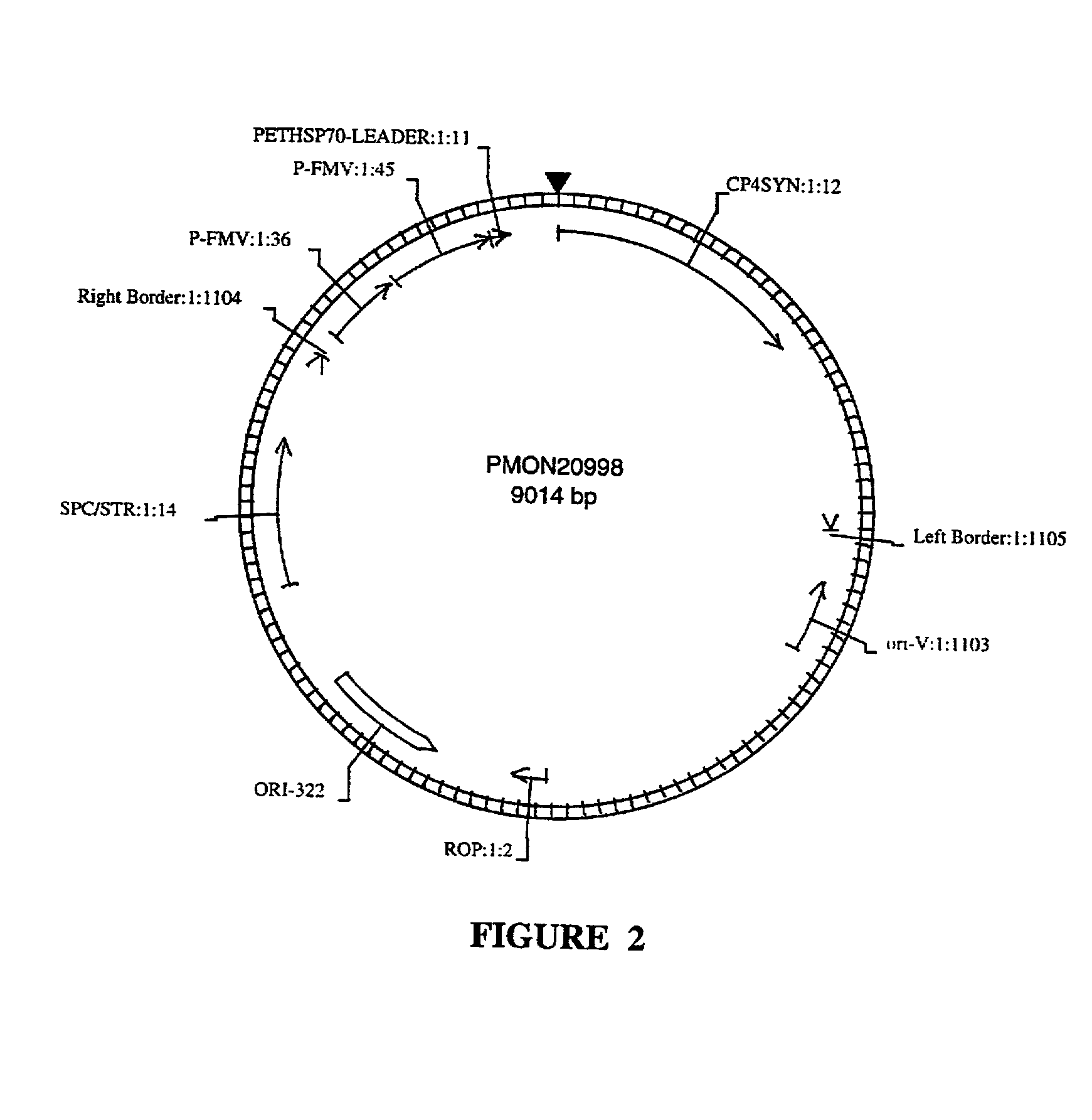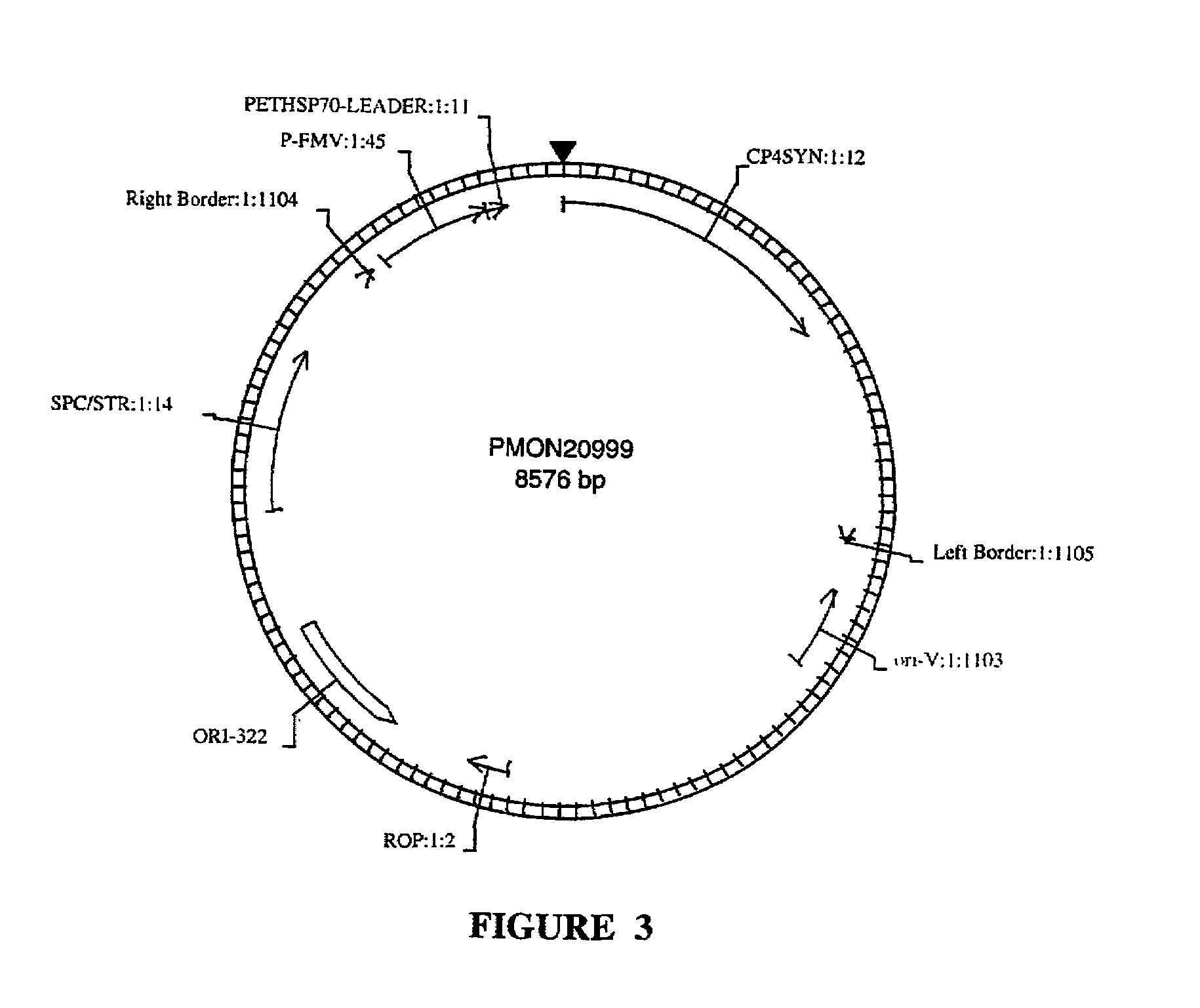Transformation and regeneration of sunflower cotyledons
a technology of cotyledons and sunflowers, which is applied in the field of transgenic sunflower (helianthus annuus l.) plants, can solve the problems of refractory cotyledons to agrobacterium-mediated transformation, requiring extensive preparation of cotyledons or additional equipment, and generally not being competent for transgenic shoot induction, etc., to achieve the effect of reducing the number of transgenic shoots, reducing the number of a s
- Summary
- Abstract
- Description
- Claims
- Application Information
AI Technical Summary
Benefits of technology
Problems solved by technology
Method used
Image
Examples
example 1
Sterilization of Sunflower Seeds with Chlorine Gas
[0138]Petri dishes (25 mm in diameter) were filled with approximately 20 grams of sunflower seeds and covered with lids. These petri dishes were then transferred to a plastic autoclavable dessicator and placed in a fume hood at room temperature. A sterile glass beaker containing 200 mL of bleach (5.25% sodium hypochlorite) was placed in the center of the desiccator. Approximately 2 mL of concentrated hydrochloric acid (12.1 M) was then added to the beaker containing the bleach. The desiccator was then covered with a lid, forming a tight seal. The desiccator was connected to a vacuum line and a vacuum of about 20 in. Hg was formed. The seeds were incubated in this fashion for about 16 hours to 24 hours. After this incubation, the vacuum was released, the desiccator lid removed, and gases allowed to escape into the fume hood. The petri dishes were transferred from the desiccator to a sterile laminar flow hood. The petri dish lids were ...
example 2
Germination of Seeds
[0139]Sterilized seeds were placed in a sterile flask. About 50 mL of germination media was then added to each flask. This germination medium was made by thoroughly mixing 1 gram of Benlate, 1 gram of Captan, and 1 gram of Bravo into 100 mL of sterile distilled water to make a stock solution. From this stock, 3 mL were added to one liter of sterile distilled water to complete the germination medium. The flasks were then covered and agitated in a shaker (approximately 100 rpm) at 28° C. in the dark. After about 24 hours of shaking, the germination media was removed from the flasks and about 75 mL of fresh germination media was added to each flask. The flasks were then placed back on the shaker (approximately 100 rpm) at 28° C. in the dark for about 20 more hours. Seeds were monitored for the formation of seedlings. Seedlings measuring approximately 15 mm in length were considered ready for use.
[0140]
TABLE 1MEDIA COMPOSITIONSNAMECOMPOSITION (per liter)LBSCK (plates...
example 3
Preparation of Agrobacterium tumefaciens
[0141]From a stock culture of Agrobacterium tumefaciens harboring a nucleic acid vector of interest, 20 mL glass tubes containing about 2 mL of LBSPCK (see Table 1) were inoculated. The inoculated cultures were placed in a shaker (160 rpm) at 26° C. under limited light conditions. After shaking for about 16 hours, this culture was used to inoculate a 250 mL flask containing fresh LB media (Table 1) at a 1:10 ratio. This culture was placed on a shaker (160 rpm) at 26° C. under limited light conditions and incubated overnight. The cultures were grown to an optical density (at 600 nm) of about 2.5 to 3.0. Cultures reaching this density were transferred to sterile tubes and subjected to centrifugation at 3000 rpm, 2619 g (will vary for the head used and for different centrifuges), for 10 minutes to pellet the bacteria. The media was removed and the pellet of bacteria was re-suspended in infiltration media to yield a final optical density of about...
PUM
| Property | Measurement | Unit |
|---|---|---|
| temperature | aaaaa | aaaaa |
| temperature | aaaaa | aaaaa |
| concentration | aaaaa | aaaaa |
Abstract
Description
Claims
Application Information
 Login to View More
Login to View More - R&D
- Intellectual Property
- Life Sciences
- Materials
- Tech Scout
- Unparalleled Data Quality
- Higher Quality Content
- 60% Fewer Hallucinations
Browse by: Latest US Patents, China's latest patents, Technical Efficacy Thesaurus, Application Domain, Technology Topic, Popular Technical Reports.
© 2025 PatSnap. All rights reserved.Legal|Privacy policy|Modern Slavery Act Transparency Statement|Sitemap|About US| Contact US: help@patsnap.com



